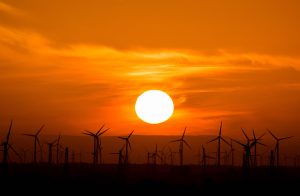 Health and safety during the energy transition
Health and safety during the energy transition
King Charles III has been recognised for his contributions to sustainability and renewable energy initiatives with the recently coronated royal earning himself a number of awards for his contributions to saving the planet over the years.
The King might be stepping back from many of his extracurricular activities now that he’s officially taken the throne but that doesn’t mean his dream of a great energy transition from fossil fuels to renewable energy should die. Indeed, it’s looking more and more like a reality.
Moving towards a bold green energy future, however, the UK should not forget to prioritise health and safety. As far back as 2020, a report by trade union Prospect stated that in 2020 the rate of lost time to injuries in offshore renewables was four times as high as in offshore oil and gas (itself a high hazard industry).
This is perhaps because the standards and precedents that have been set in stone for decades don’t really exist for the green energy sector. And that’s why we’re going to be offering a few examples below of potential risks and how to avoid them.
Confined spaces
The transition to green energy often involves working in confined spaces, such as wind turbine towers or solar panel installations. These environments can pose unique risks, including limited entry and exit points, restricted ventilation, and potential exposure to hazardous substances. There are also explosions and fire hazards to consider, as well as exposure to toxic gases and environments where oxygen depletion may occur.
- Conduct a thorough risk assessment of confined spaces, identifying potential hazards and implementing appropriate control measures.
- Develop safe systems of work that address entry and exit procedures, ventilation requirements, and emergency response protocols.
- Regularly monitor air quality, oxygen levels, and potential contaminants within confined spaces. Utilise gas detectors and monitoring equipment to ensure a safe working environment.
PPE and training
These hazards will require that companies keep on top of their health and safety. Equipment like appropriate safety clothing will still be necessary to decrease the chances of any accidents. Comprehensive training programs are also essential when it comes to equipping workers with the knowledge and skills required to work safely in the evolving sector.
- Ensure appropriate respiratory protection is provided, considering the potential exposure to dust, chemicals, and airborne pollutants associated with renewable energy installations.
- Implement adequate fall protection measures for workers involved in tasks at height, such as wind turbine maintenance or solar panel installation.
- Provide electrical PPE, such as insulated gloves and safety footwear, for workers involved in the installation, maintenance, or repair of electrical systems in green energy infrastructure.
Digital connectivity
There are also advances being made in safety technology to secure the safety of employees and other assets, for example around digital connectivity and technological advancements that can significantly enhance health and safety practices during the transition to green energy.
- Use digital connectivity to remotely monitor and control renewable energy installations, reducing the need for workers to physically access potentially hazardous areas.
- Leverage data analytics to identify potential safety risks and implement proactive maintenance measures. Predictive maintenance can help prevent equipment failures and minimise worker exposure to hazardous situations.
- Utilise digital platforms and communication tools to ensure seamless information sharing, incident reporting, and collaboration among workers and management.



